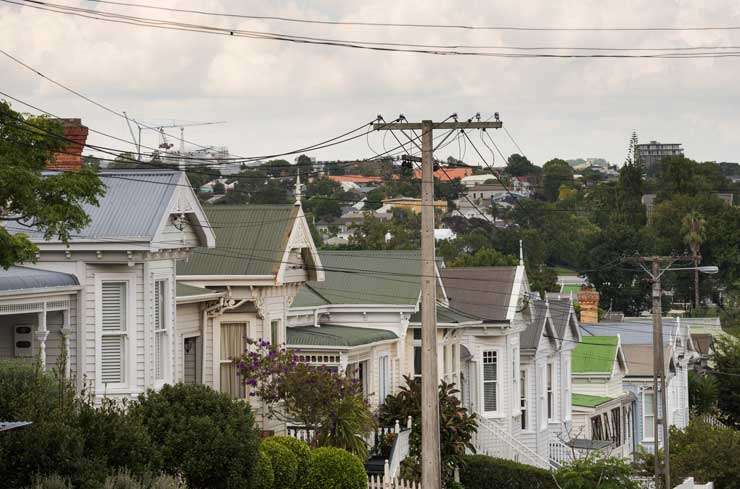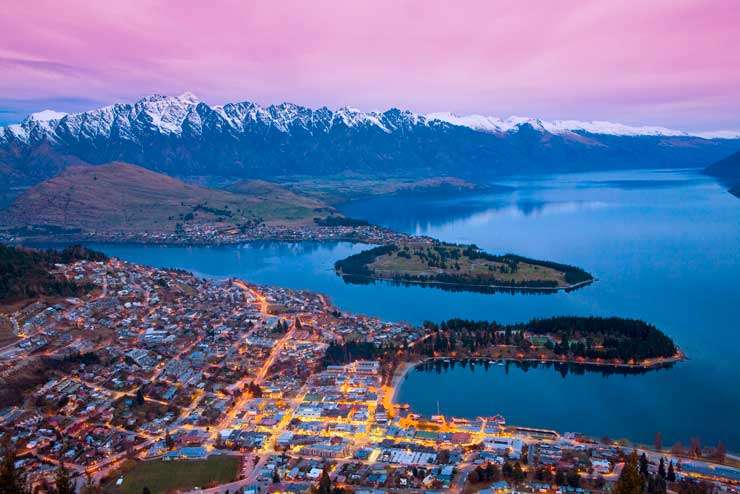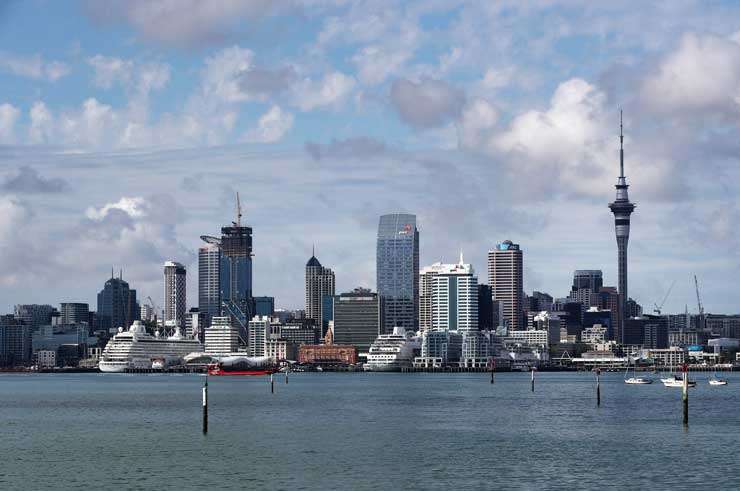Homes in 51 suburbs across New Zealand gained more than $300,000 in value over the last 12 months, new OneRoof research shows.
As the housing market shot off post-pandemic buyer demand saw Auckland suburbs in particular make hefty rises, though not all suburbs in the country benefitted, with 45 gaining less than $50,000 and a few actually making a loss.
READ MORE: Find out if your suburb is rising or falling
The leaps in median property values in the 51 highest-earning suburbs were on average more than six times the median Kiwi salary, although homes in one location, Waiheke Island, earned $775,000 in the 12 months to February 15 – more than 14 times the median salary.
Start your property search
Of the 51 suburbs, 47 were in Auckland, three were in Wellington and two in Bay of Plenty. And of the Auckland earners, 24 were in Auckland City, 12 were in Manukau region, nine were on the North Shore, and one, Oratia, was in Waitakere.
The four biggest earners follwing Waiheke Island were Herne Bay (up $510,000 to $3.005 million); St Marys Bay (up $470,000 to $2.71 million); Glendowie (up $467,500 to $2.022 million); and Westmere (up $445,000 to $2.23 million).
The biggest earner outside of Auckland was Te Puna, in the Western Bay of Plenty, where the median property rose $395,000 to $1.502 million. The biggest earner in Wellington was Mount Victoria, up $350,000 to $1.345 million.
Ten of the suburbs had median property values of $2 million or more, while the biggest earning suburb with the lowest median value was Waihi Beach, in the Western Bay of Plenty, which rose $330,000 to $1.15 million. The most affordable Auckland suburb out of the list was Oratia, where the median value was $1.185 million, up $312,500 in the last 12 months.
James Wilson, director of valuation at OneRoof’s data partner, Valocity, said the gains reflected the surge in the market and the demand for homes at the top end of the market. “Homeowners in wealthier suburbs are also using the low interest rates and equity in their homes to renovate and they are getting good prices as a result when they sell.”
The ten biggest earners in was Waiheke Island in the Hauraki Gulf where the average median gain was 15.6 per cent since Covid with homes now averaging $1.852m, a rise of $775,000.
Waiheke Island Bayleys agent Mary Curnow says there were some big prices being achieved on the island, the result of exceptional interest since Covid-19.

Herne Bay in Auckland. The suburb’s median property grew by more than half a million dollars in the last 12 months. Photo / Ted Baghurst
Agents were so busy they were controlling how many properties they made live in order to cope with the huge levels of inquiry, though listings on the island were also in short supply.
Wilson said Covid had impacted supply and demand issues but while there was dearth of properties coming to market those that have were generally well-presented, and that’s a post-Covid trend.
“In the post-Covid world there’s been quite a big rise in renovation activity, especially in those high value suburbs in Auckland and the same goes for many of New Zealand’s main urban centres.
“There’s been a lot of work done on bathrooms, kitchens, extensions, landscaping, because basically people can’t travel, are borrowing to do the work, they’ve got equity in their house, so what’s hitting the market is the cream of the crop.
“They are weighted towards that upper end of the stock profile which is important because that means not everyone in that suburb has suddenly become $300,000 on paper richer, it means what is selling is more than usual tilted towards the upper end of that location.”

Property values in Queenstown suburbs enjoyed only modest gains in the last 12 months. Photo / Getty Images
Other suburbs around the country made more modest gains with the most modest concentrated in the South Island. The median property value for Paroa, in Grey, for example, is $392,000, representing a small $5000 gain over the last 12 months.
And while Queenstown has taken an economic hammering from the lack of international tourists, suburbs there still rose in value.
Fernhill, on the lower slopes of Ben Lomond, now sits at $875,000, a $10,000 rise in the past year, and Lower Shotover gained $20,000 with the average now sitting at $1.065 million.
Other South Island suburbs with modest rises include Wallacetown in Southland, Akaroa in Christchurch and Mataura in Gore. Of the handful of suburbs which fell nationwide over the last year most are also in the South Island.
They include Cromwell in central Otago which fell by 1% and Te Anau in Southalnd which fell by 6.7%.
The news is not all bad, though. Grey through to Buller were soft markets before Covid arrived due to local economies and population factors, whereas Queenstown and wider Otago saw a drop post-Covid but a resurgence when people saw the market had not tanked and there were good properties to buy.

Auckland’s inner-city apartment market took a hit as result of Covid but is now in recovery mode. Photo / Fiona Goodall
Investors, however, had focussed on more central Queenstown locations which has meant some of the outlying areas, such as Shotover, look on paper as if they have dropped compared to the demand from 18 or so months ago.
The market has more gone on pause than tanked and these areas are likely to stay flat for a bit longer yet.
The same goes for Te Anau which has also been impacted by the lack of international tourists.
“When tourism is really hot you get the investors flocking in buying Air B&B type properties and overnight the pause button has been hit,” Wilson said.
“It looks like a big drop on paper but in reality it’s not a doom and gloom story – if you own a home in Te Anau your future’s not bleak, it’s just that things are a bit slower than they were.”
Ray White agent Don McFarlane covers Te Anau and said that while the town may not be going crazy compared to other parts of the country, prices were holding up.
The only Auckland suburb to be negatively impacted by Covid was Auckland central’s inner-city apartment market, down 0.7%, but Wilson said this was largely due to the nature of the apartments which accommodate the now soft student market.
“We’re not seeing a mass exodus by investors dumping their stock. Neither are we seeing many investors jump in to buy, therefore, we’re not seeing massive value drops – we’re just seeing that entire market pausing.”


